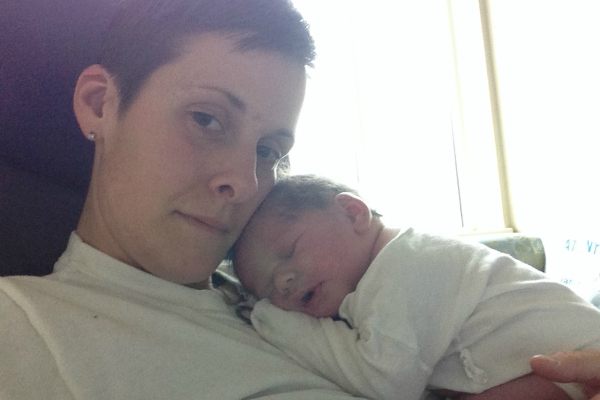I yearned for the physical bond many mothers get with their babies at birth. Because I was never pregnant, I didn’t get 9 months to know and love my daughter before she arrived. I wanted to make up for lost time. I wanted to coddle her, to look down at her little body, to get to know someone so new to me.
For many moms, breastfeeding creates an inseparable bond with their children. However, if you’re not the birth mom of your child, often this means missing out on this bonding opportunity. Thankfully, there is a solution. With the right combination of prescriptions, supplements, and pumping, some women are able to induce lactation.

The Newman-Goldfarb Protocols for Induced Lactation are designed to prepare adoptive or intended mothers’ breasts for making breast milk. The goal is to simulate pregnancy in the body by providing it with the necessary elements {prolactin} to encourage breast tissue development.
Inducing lactation takes considerable dedication and preparation, but it can be done! If possible, give yourself 2-3 months of preparation before you are planning to nurse.
Before baby arrives ::
- Connect with a supportive lactation consultant.
- Obtain the necessary hormones. {Your doctor or lactation consultant can help with this.}
- Purchase or borrow a breast pump.
- Pump, pump, pump: 7-8 times a day, every 3 hours, 24 hours a day.
As you can see, pumping is key. If at all possible, rent a hospital-grade electric breast pump. The first couple days of pumping, chances are nothing will happen. You’ll be tender and sore. You’ll want to throw in the towel. But don’t give up! Eventually you will see little droplets emerge. Milk!
Make sure your partner is on board as well. Support from your spouse is important for success, especially when you are waking in the middle of the night to pump before baby is part of your family.
Once baby has arrived, get as much skin to skin time as possible. Work on latching and be sure to ask lactation consultants for help.
The reality is, you may not make enough to exclusively feed your baby, so supplementing with donor milk and/or formula is an option. Remember, this is an amazing undertaking, so kudos to you! And don’t forget… Every ounce counts. It’s not just about the milk, but about the bond you are creating with your baby.
















I found a list of useful links for inducing lactation recently. Check it out!
http://lactation.wiki/wiki/Inducing_Lactation_Resources
It’s been really helpful.